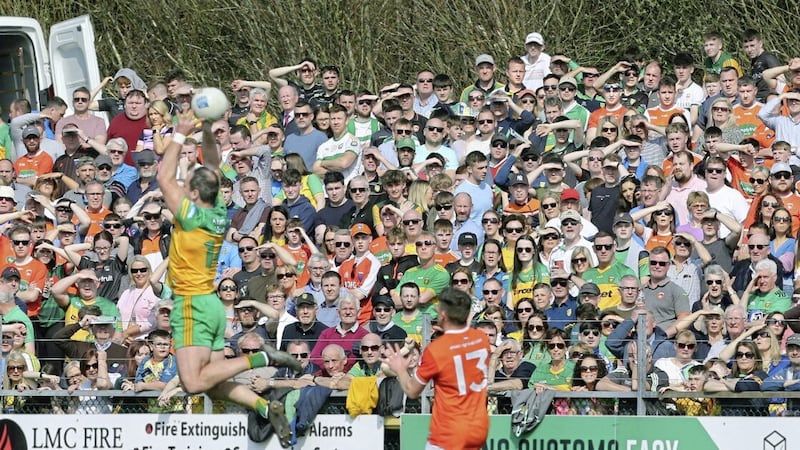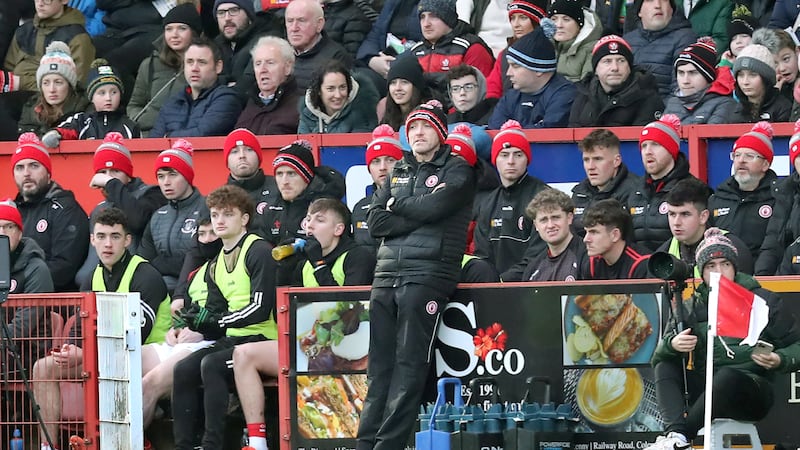WITH the dreadlocks hanging out the back of his head like birds’ feet out of the nest, shoulders the width of the Tyne and the legs chopping at City’s defence faster than the river’s flowing contents, you didn’t need to look twice to find Allan Saint-Maximin on Sunday.
The French winger’s performance in St James’ Park was remarkable for a few reasons.
Firstly, he took men on, which you almost never see now.
Mostly, though, he succeeded in what has become a near-impossibility – he made a game involving Manchester City interesting.
The cult of City’s possession-based game has been poured like a thick gravy over English football by a manager who’d had enormous success with the recipe in Barcelona.
In their first three Premier League games this season, City have played 2,137 passes. That’s an average of 712 per game.
Bearing in mind the other team gets the odd touch, and that the ball is only in play for around 55 minutes of a Premier League game, that’s a lot of passing.
The majority of it is designed to go nowhere but drain the opposition’s soul chasing the ball until someone switches off, the gap opens and City score.
Yet people still blindly travel the length and breadth of England in their thousands every weekend to watch their team play in a competition they cannot win against a team they cannot beat.
Stadiums are as full as they’ve ever been. It’s the richest league on the planet by a mile, watched the world over on TV.
People don’t seem to mind what the spectacle looks like because there’s always next week, and the fatigue of tomorrow never arriving doesn’t seem to ever set in on the average football fan.
We’re at a similar point with Gaelic football right now because most sports are in the same position.
The Allianz Leagues are attracting bigger crowds than ever before. Championship attendances are holding up. Interest is no less than it has been.
Yet think about this.
Take the last five football matches you attended in person.
Look back at them individually in your mind’s eye and answer this question: would you have missed much if you hadn’t gone?
In the crowd at most games, there is very little atmosphere. Incident creates atmosphere.
But pretty much the only incidents in modern football are scores and turnovers. The rest of it is a coach’s dream but a fan’s nightmare.
Patterns of play are a necessity for winning teams but lining up in an arc around the 45 trying to get a runner through a gap to win a free is the viewer’s equivalent of a night out with Fr Stone.
There’s just very little to engage average punters and get them excited.
Championship attendances have been on a downward curve for more than a decade. And perhaps those comparisons will always be unfair because the noughties were quite possibly football’s everlasting pinnacle.
Unfamiliar giants stomping down from Ulster, filling Croke Park for their provincial finals, winning All-Irelands, Kerry finding a new nemesis, Dublin’s eternal quest, Mayo being Mayo, even Fermanagh coming within a kick of a final – it was so extraordinarily gripping by any standard.
Part of that was that the game was just about clinging to enough innocence to get by. Sweepers and massed defences were calling on the house phone but they hadn’t yet been invited to Sunday dinner. Their feet were kept back from the table for just long enough.
Also, there was money in the country then. The GAA has inflation to deal with the same as anyone else but it’s never found the level properly since. Championship summers are expensive summers.
Mostly, the average GAA fan just goes because they go. Because it’s the weekend and it’s summer and the match is on and we go and sure what else is there to do anyway?
The anticipation of championship games is still enormous. The aftermath is divisive.
But is the game itself, the very thing that we’re all actually there for, really worth watching most of the time?
You could say the sport has a problem in that it just doesn’t engage people enough when they’re there to keep them coming back, yet crowds don’t reflect that.
Within that, though, the GAA trades a lot off the social occasion, the fear of missing out and the religious devotion to the game.
They don’t need to look to far to find out what happens to a religious order that doesn’t modernise and adapt.
People used to go to Mass just because they went, and the Church was complacent on that. Now, it's in an irreparable state.
For football it's particularly worrying when it comes to a distracted youth, whose lives are lived in 10-second bursts on TikTok. Seventy minutes of you go, I go is what they want from their gym session, not the attacking strategies seen at a football match.
This isn’t a rose-tinted ‘we want our game back’ rant. A lot of the old game was poor in quality. Players now are infinitely better on the whole, fitter, faster, stronger, more skilled. All of the potential is there and that owes itself to good coaching.
It’s just the game they’re playing isn’t all that attractive. We’re caught in a real quandary with it all. Scoring rates keep on growing, yet the methods by which they’re largely created are dull and monotonous.
Supporters abhor rule changes. Look at the attacking mark. Now, this is not a defence of it. I don’t like it either. The scores that come off it are so soft and unfair to defenders. But you have to wonder is it a necessary evil?
In 2018, the year before it’s introduction, kicking was at its lowest recorded level. The ball was being kicked on average 106 times per game.
Across the first three championship seasons after the attacking mark came in, that figure rose to 129. The numbers feel like small change but that’s an improvement of more than 20 per cent.
Kerry got handy scores off it in the All-Ireland final but from the other perspective, if the rule doesn’t exist, do Kerry ever kick the ball in? Or do those attacks just become as unmemorable as every other time the ball gets run the length of the pitch?
The mark isn’t perfect, it’s not at all likeable, but at some point we have to set aside our aversion to change and recognise that Gaelic football really needs to absorb tweaks if it’s to stay relevant and exciting.
Coaches largely dislike change because they like being able to outsmart and manipulate a game designed a century-and-a-bit ago. Change means having to find new ways to do that, and coaches don’t like that.
You can’t have a sport where the rule is run entirely by coaches and nor can you have a sport for the people who turn up twice a year to watch. It has to be somewhere in the middle.
Manchester City’s possession game hasn’t ruined the Premier League, it hasn’t affected attendances, it hasn’t affected income, yet the brilliance of what they do against the flatness of the atmosphere at their games and people being bored by their style is not unfamiliar.
If Gaelic football doesn’t change, the people that go will still go and the people that don’t still won’t.
But it’s the group in the middle that only need a nudge to fall on to a bandwagon that the market revolves around.
Are that group missing much? Truth is they probably aren’t.







